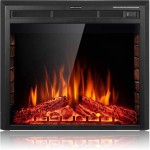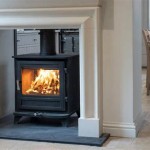How Much Does It Cost to Add a Gas Fireplace to a House?
Adding a gas fireplace to a house can significantly enhance its aesthetic appeal, provide a supplemental source of heat, and potentially increase its resale value. However, the cost of such a project varies substantially depending on numerous factors, encompassing the type of fireplace, installation complexity, and regional pricing differences. This article explores the various cost components involved in adding a gas fireplace, providing a comprehensive overview to help homeowners budget accurately for this home improvement endeavor.
Firstly, it's important to differentiate between the various types of gas fireplaces available. The price of the fireplace unit itself contributes significantly to the overall cost. Direct-vent fireplaces generally cost more than vent-free models due to their more complex venting requirements and higher efficiency ratings. Electric fireplaces, while not requiring gas lines, may also be considered as an alternative and will have a separate pricing structure. Furthermore, the size and features of the fireplace, such as realistic logs, remote control operation, and advanced flame technology, will also influence the purchase price.
Installation costs are another substantial factor. These costs can fluctuate dramatically depending on the existing home infrastructure, the location of the fireplace within the house, and the need for gas line installation or extension. Homes already equipped with a natural gas line near the desired fireplace location will generally have lower installation costs compared to those requiring extensive gas line modifications. Permits, inspections, and labor costs also contribute to the total investment.
Finally, regional variations in labor and material costs play a significant role. Areas with a higher cost of living generally have more expensive labor rates, thereby increasing the overall expense of the project. Similarly, the availability and pricing of materials, such as piping, venting, and decorative elements, can vary regionally. Understanding these factors is crucial for obtaining accurate cost estimates and budgeting appropriately.
Key Point 1: Gas Fireplace Unit Costs and Types
The type of gas fireplace selected significantly impacts the overall project cost. Direct-vent fireplaces are sealed combustion appliances that draw combustion air from outside and vent exhaust gases directly outside through a dedicated vent pipe. This venting system ensures optimal indoor air quality and makes these fireplaces more energy-efficient. Consequently, direct-vent fireplaces typically command a higher price point, ranging from $1,500 to $5,000 or more, depending on the size, features, and brand.
Vent-free or ventless gas fireplaces, on the other hand, do not require a vent pipe. They burn room air and exhaust combustion gases directly into the living space. While they are less expensive to install because they eliminate the need for venting, they are subject to stricter building codes and may not be permitted in all jurisdictions due to concerns about indoor air quality. Vent-free fireplace units generally range from $500 to $2,500.
Insert fireplaces are designed to be installed within an existing masonry fireplace. They offer a convenient way to convert an inefficient wood-burning fireplace into a more efficient and cleaner-burning gas fireplace. Gas fireplace inserts typically range from $2,000 to $6,000, depending on the size, features, and venting requirements.
Other factors that influence the unit cost include the fireplace's BTU (British Thermal Unit) rating, which indicates its heating capacity. Fireplaces with higher BTU ratings are generally more expensive. The aesthetic design, including the type of logs, firebox design, and available finishes, also affects the price. Advanced features like remote control operation, programmable thermostats, and electronic ignition systems further contribute to the unit cost.
Key Point 2: Installation Costs: Labor, Gas Line, and Venting
Installation costs typically represent a substantial portion of the total project expense. These costs encompass labor for installation, gas line installation or extension, venting installation (if applicable), and any necessary modifications to the existing framing or structure.
Labor costs vary depending on the complexity of the installation and the prevailing labor rates in the area. A simple gas fireplace installation, where a gas line already exists in close proximity, might cost between $500 and $1,500. However, more complex installations, involving running new gas lines through walls or floors, or requiring significant modifications to the existing structure, can easily exceed $2,000 or even $3,000.
The cost of gas line installation or extension depends on the distance the gas line needs to be run, the type of piping used, and any obstacles encountered during the installation process. Running a new gas line can range from $10 to $25 per linear foot, including materials and labor. This cost increases if the gas line needs to be run through difficult-to-access areas or requires specialized trenching.
Venting installation costs vary depending on the type of venting required. Direct-vent fireplaces require a specific type of double-walled vent pipe that is designed to safely exhaust combustion gases outside. Venting costs can range from $100 to $500 or more, depending on the length and complexity of the venting system. Vent-free fireplaces, as previously mentioned, do not require venting, thereby eliminating this cost component.
Permit fees and inspection costs are also factors to consider. Most jurisdictions require permits for gas fireplace installations to ensure compliance with building codes and safety regulations. Permit fees can range from $50 to $200 or more, depending on the location and the scope of the project. Inspections are typically required to verify that the installation meets safety standards and local building codes.
Key Point 3: Regional Cost Variations and Additional Expenses
Regional variations in labor and material costs significantly impact the overall project expense. Areas with a higher cost of living generally have higher labor rates, which can substantially increase the installation costs. Similarly, the availability and pricing of materials, such as piping, venting, and decorative elements, can vary regionally. It's important to obtain multiple quotes from local contractors to get an accurate understanding of the prevailing costs in the area.
The location within the house where the fireplace is installed also affects the cost. Installing a fireplace on an exterior wall is generally less expensive than installing it on an interior wall, as it simplifies the venting process. Installing a fireplace in a basement can also add to the cost, especially if it requires additional excavation or modifications to the existing foundation.
Additional expenses to consider include decorative elements such as mantels, surrounds, and hearths. These elements can significantly enhance the aesthetic appeal of the fireplace but can also add to the overall cost. Mantels can range from a few hundred dollars for a simple wooden mantel to several thousand dollars for a custom-made mantel. Surrounds, which are the decorative elements that frame the fireplace opening, can also vary in price depending on the material and design. Hearths, which are the non-combustible surfaces in front of the fireplace, can range from a few hundred dollars for a simple tile hearth to several thousand dollars for a custom-designed stone hearth.
Finally, it is prudent to factor in potential unforeseen expenses. Demolition of existing structures, modifications to electrical wiring, and unexpected plumbing issues can all contribute to cost overruns. It is advisable to budget for a contingency fund of 10% to 15% to cover any unexpected expenses that may arise during the project.
In summary, the cost of adding a gas fireplace to a house is influenced by a multitude of factors, including the type of fireplace, installation complexity, regional cost variations, and additional decorative elements. Homeowners should carefully consider these factors and obtain multiple quotes from qualified contractors to ensure they are budgeting appropriately for this home improvement project. Detailed planning and thorough research are critical steps in achieving a successful and cost-effective gas fireplace installation.

Adding A Gas Fireplace To An Existing Home Just Log Fires

How Much Does It Cost To Install A Gas Fireplace Homeserve Usa

How Much Does A Gas Fireplace Cost Fireplaces Direct Learning Center

Gas Fireplace Insert Cost Forbes Home

Fireplace Installation Cost 2024 Gas Wood Burning Electric

What Does It Cost To Install A Fireplace Vs Wood Stove Stamford Fireplaces

Gas Fireplace Cost Guide Unit Add Ons Installation More

How Much Does A Gas Fireplace Cost Fireplaces Direct Learning Center

Estimated Page Fireplaces Stoves Inserts Wood Gas Pellet
.aspx?strip=all)
Yearly Cost Of Operating A Gas Fireplace Regency
Related Posts








